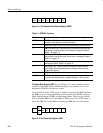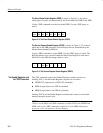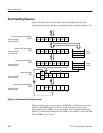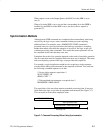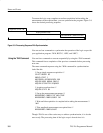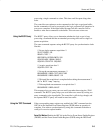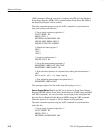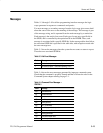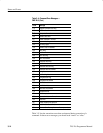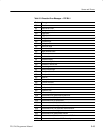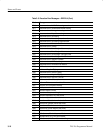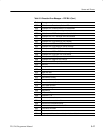
Status and Events
3–10
TLS 216 Programmer Manual
*ESE commands. When the operation is complete, the OPC bit in the Standard
Event Status Register (SESR) will be enabled and the Event Status Bit (ESB) in
the Status Byte Register will be enabled.
The same command sequence using the *OPC command for synchronization
with serial polling looks like this:
/* Set up single-sequence acquisition */
SELECT:GROUP1 ON
GROUP1:FIRST 1
HORIZONTAL:RECORDLENGTH 500
ACQUIRE:MODE NORMAL SAMPLE
ACQUIRE:STOPAFTER SEQUENCE
/* Enable the status registers */
DESE 1
*ESE 1
*SRE 0
/* Acquire waveform data */
ACQUIRE:STATE ON
/* Set up the measurement parameters */
MEASUREMENT:IMMED:TYPE AMPLITUDE
MEASUREMENT:IMMED:SOURCE CH1
/* Wait until the acquisition is complete before taking the measurement. */
*OPC
While serial poll = 0, keep looping
/* Take amplitude measurement on acquired data */
MEASUREMENT:IMMED:VALUE?
This technique requires less bus traffic than did looping on BUSY?.
Service Request Method Enable the OPC bit in the Device Event Status Enable
Register (DESER) and the Event Status Enable Register (ESER) using the DESE
and *ESE commands. You can also enable service requests by setting the ESB
bit in the Service Request Enable Register (SRER) using the *SRE command.
When the operation is complete, a Service Request will be generated.
The same command sequence using the *OPC command for synchronization
looks like this:
/* Set up single-sequence acquisition */
SELECT:GROUP1 ON
GROUP1:FIRST 1
HORIZONTAL:RECORDLENGTH 500



